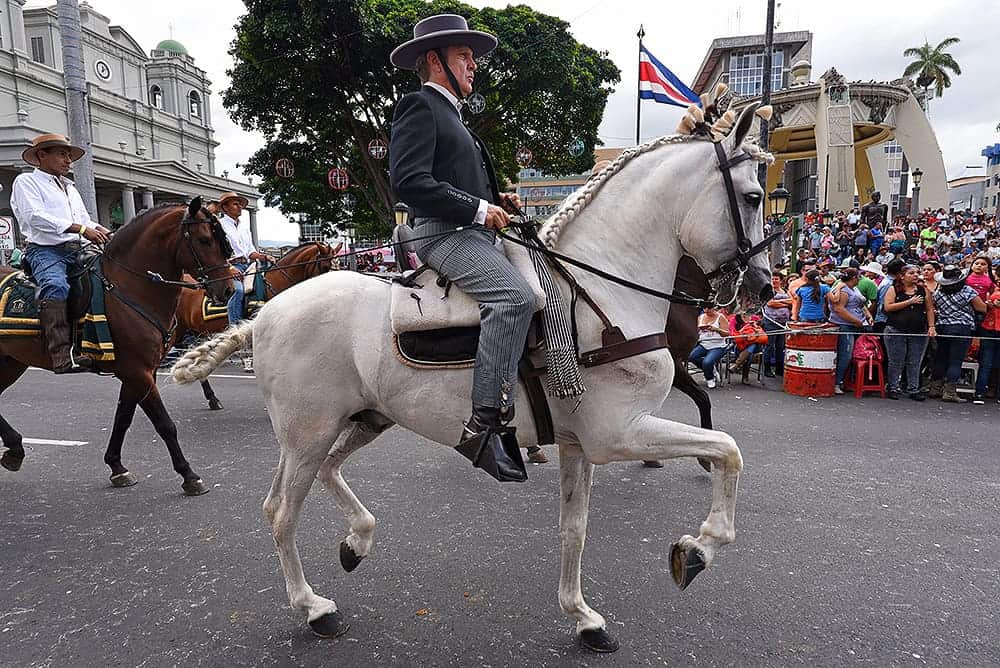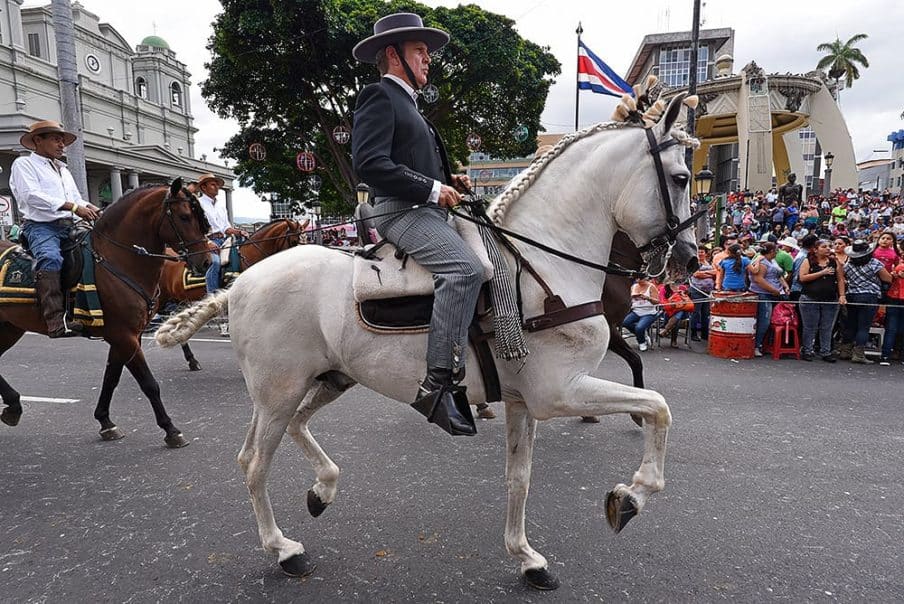
The El Tope Parade is one of Costa Rica’s most iconic and enduring cultural traditions. This vibrant equestrian event occurs annually in cities across the country, attracting thousands of spectators who revel in displays showcasing national pride, identity, and heritage.
El Tope literally translates to “at the top”, believed to reference skilled riders and high-stepping horses considered the best of the best. The parade spotlights Costa Rica’s strong ranching and cowboy history in a kaleidoscope of music, movement, and color.
I’ll explore exactly what the beloved spectacle entails and why it holds such meaning in Costa Rica.
Roots in Ranching Culture
Costa Rica’s cattle ranching and cowboy, or sabanero, culture provided the foundation for El Tope traditions. During colonial era expansion, the Spanish introduced horses and cattle farming techniques still utilized today. This ranching lifestyle endures as an integral part of Costa Rican society.
Sabeneros round up livestock on horseback while donning traditional outfits like embroidered shirts, long leather leggings, boots, sashes, and wide-brimmed hats. Many belong to cultural groups promoting equestrian customs. Rider clubs train year-round for performances at El Tope celebrations displaying their talents.
The parade allows ranch hands and charros (cowboys) to proudly showcase the pinnacle of breeding, raising and training Paso Fino horses. Characterized by smooth lateral ambling gaits, these Spanish breeds are prized in Latin America. Through meticulous, tender handling, Costa Rica’s Paso Finos learn complicated choreography and maneuvers years in the making.
When sabaneros and their prized horses strut artful steps in unison along parade routes, it represents the height of horsemanship mastery worthy of the name El Tope – “at the top”.
Legacy of the Costa Rica Ox Carts
Yet horses only constitute part of the festivities. El Tope parades also feature colorful ox carts highlighting Costa Rica’s legacy with this national symbol that appears on money and in art.
Oxen and two-wheeled carts were essential for transporting coffee beans and other agricultural products during early settlement. But their decoratively hand-painted carts in today’s parades mainly serve decorative purposes.
Elaborately ornamented ox carts lumber down parade tracks, each distinctive work of folk art. Spectators can glimpse Costa Rica’s heritage in their elaborately hand-carved wooden frames, metal fittings, and vibrant paint combining traditional geometric patterns with rural scenes. The carts epitomize cultural tradition and artisan craftsmanship at its finest.
Festive Atmosphere
El Tope delivers a bounty of sights and experiences beyond splendid horses and ox carts that stoke national pride. Fiesta spirit permeates the entire lively cultural occasion.
Parades travel along routes lined by cheering crowds who arrive early to secure street-side spots. Spectators sport national colors, wave flags, blow horns and set the celebratory mood. Vendors hawk traditional snacks and beverages to hungry attendees. Tipsy topes (cavalcades) continue late into the night with dancing, flirting, eating and drinking.
Marching bands sporting snazzy uniforms keep enthusiasm high with upbeat tunes echoing through the air. Colorful floats sponsored by community groups and politicians promote important causes and candidates. Everyone wants an entertaining spectacle, so participants bring their A-game with flashy performances and finery.
Especially during San Jose’s Gran Tope Nacional on December 26 launching the capital’s annual Festejos Populares, the talent level and cultural display impresses all who witness it. The country’s best horses seem to prance to the music as they showcase intricate steps.
Dapper caballeros (horsemen) tip their hats to admirers. Captivating traditional dances fill the streets. Ticos brim with pride at this vibrant emblem of Costa Rican identity.
El Tope Legacy & Significance
The exact origins of El Tope tradition remain unclear, with different theories related to early religious ceremonies, cattle drives, or horse racing events. What matters more is the heritage it now represents in celebrating Costa Rica’s distinctive sabanero culture.
Parades only seem to grow in scale and popularity every year. For locals, El Tope inspires patriotism and community connectedness by renewing cultural spirit. It provides family-friendly entertainment and fun benefiting hotels, restaurants and businesses through festive tourism. Internationally, it offers visitors authentic glimpses into enduring Latin American traditions.
Passo finos dancing in place and ox cart wheels turning act as poignant reminders of the battles, blood, sweat and tears that built the nation. El Tope gives all Ticos a chance to commemorate those who cultivated the land for centuries. Costa Ricans take pride that their small country gained independence without an army, instead valuing peace, nature and folk art like the colorful ox carts.
Parades also build camaraderie and friendly rivalry between nearby towns vying to showcase superior horsemanship and cowboy regalia. Deep bonds develop during months preparing horses to perform synchronized steps and riders rehearsing for their brief moment to shine in front of crowds.
For these reasons and more, El Tope continues gaining acclaim as a highlight of the Christmas season and popular tourist attraction. Its time-honored customs manage to honor history while showcasing Costa Rica’s strengths and bright future.
The Takeaway
The El Tope parade spotlights enduring cowboy and ranching culture with an energetic display celebrating some of Costa Rica’s most iconic elements. Prancing Paso Finos exhibit years of patient training guided by sabanero horsemen.
Postcard-worthy painted ox carts display creativity meeting usefulness. Fiesta spirit brings communities together to toast tradition. This rich showcase encapsulates heritage and identity while driving tourism. El Tope reminds all who flock to see it exactly why Costa Rica shines.


